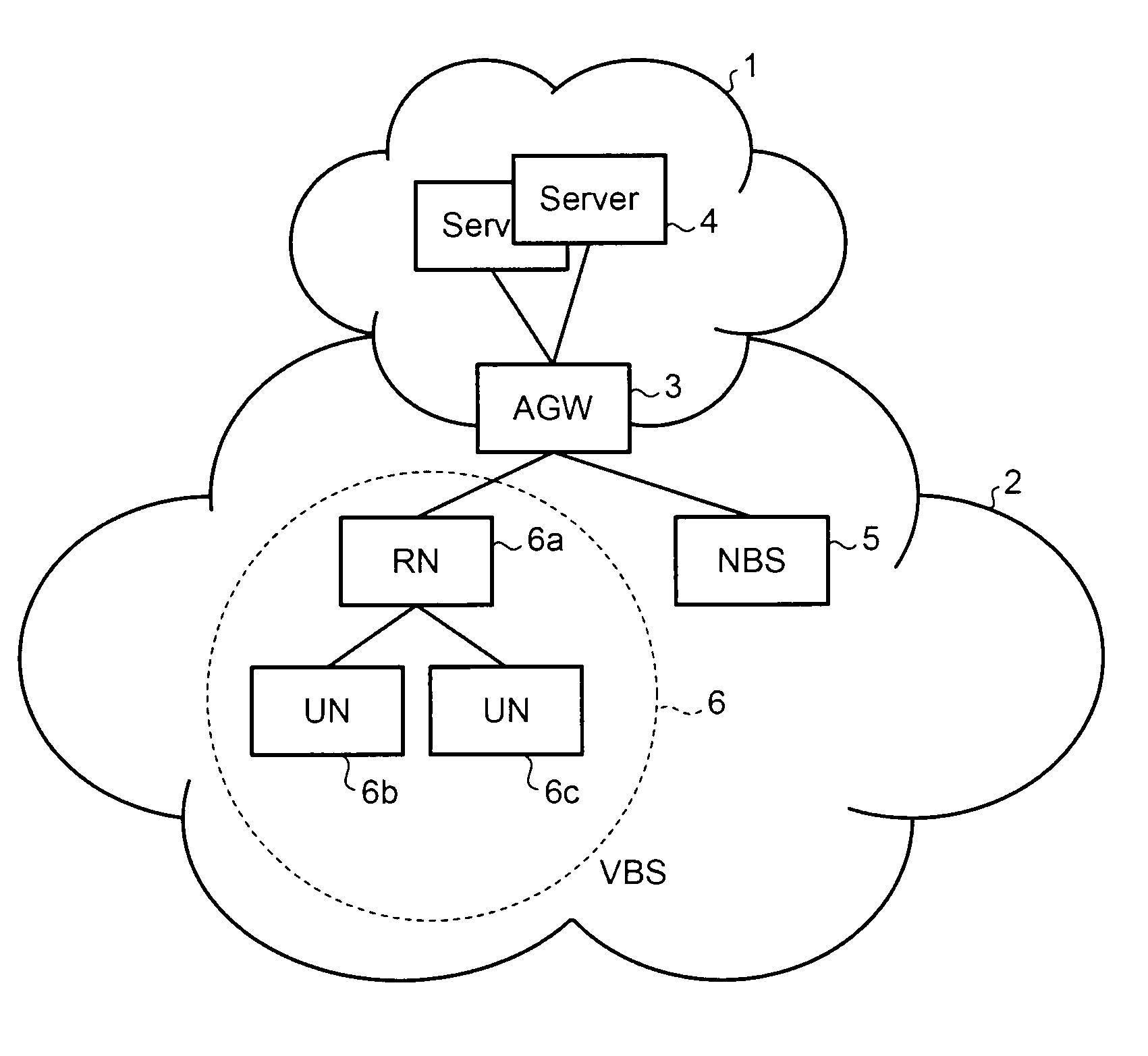Wireless communication system and base station
a communication system and base station technology, applied in the field of wireless communication system, can solve the problems of limited number of base stations and the number of cells that a base station control device is able to accommodate, and the inability of the base station control device to accommodate some of the base stations. , to achieve the effect of improving the efficiency of base station accommodating efficiency of the core network devi
- Summary
- Abstract
- Description
- Claims
- Application Information
AI Technical Summary
Benefits of technology
Problems solved by technology
Method used
Image
Examples
first embodiment
[0081]FIG. 1 is a diagram showing an exemplary configuration of a wireless communication system according to a first embodiment of the present invention. In the wireless communication system according to the first embodiment, an Access Gateway (AGW) 3 is a gateway device that connects a core network 1 and a wireless network 2 together. In the core network 1, servers 4 that include a database that stores therein information of users who have contracted for service and that perform billing operation are present. All the base stations included in the wireless access network 2 perform communications with the core network 1 via the AGW 3. In the following sections, the communications performed between the AGW 3 and the base stations in the wireless access network 2 will be explained. The wireless access network 2 is assumed to be an Internet Protocol (IP) network.
[0082]Base stations 5, 6a, 6b, and 6c are present in the wireless access network 2. The base station 5 and the base station 6a...
second embodiment
[0272]According to the first embodiment described above, the one RN performs the common control signaling message processing such as the paging process and the individual control signaling message processing such as the call control process and the handover process for each UE, as well as the user data relay process. In contrast, in the following sections, another embodiment in which one RN is provided for each of different types of signaling messages and user data will be explained.
[0273]FIG. 34 is a diagram showing an exemplary configuration of a wireless communication system according to a second embodiment of the present invention. RN-C 6a-1, RN-D 6a-2, and RN-N 6a-3 are representative base stations. The RN-C 6a-1 is in charge of processes to activate / shut down the virtual base station VBS 6 and processes related to the state monitoring process, the paging process, and the like that are performed by the core network 1. The RN-D 6a-2 is in charge of transmitting and receiving sig...
third embodiment
[0382]According to the first and the second embodiments described above, the same node (such as the RN or the RN-D / RN-N) performs the process to relay both the signaling messages and the user data. However, during the process to relay the user data, there is no need to change the relaying method by interpreting the contents of the received messages, unlike the signaling messages used in the handover process. Thus, it is possible to adopt a device as an independent device dedicated for relaying the user data so that it is possible to control, as necessary, the relaying method from a node relaying the signaling messages. According to a third embodiment of the present invention, an example will be explained in which the RN manages the user contexts and relays the signaling messages, whereas a dedicated device (hereinafter, a “U-Proxy”) relays the user data.
[0383]Control exercised by the RN over the relay process performed by the U-Proxy includes: starting a process to relay the user da...
PUM
 Login to View More
Login to View More Abstract
Description
Claims
Application Information
 Login to View More
Login to View More - R&D
- Intellectual Property
- Life Sciences
- Materials
- Tech Scout
- Unparalleled Data Quality
- Higher Quality Content
- 60% Fewer Hallucinations
Browse by: Latest US Patents, China's latest patents, Technical Efficacy Thesaurus, Application Domain, Technology Topic, Popular Technical Reports.
© 2025 PatSnap. All rights reserved.Legal|Privacy policy|Modern Slavery Act Transparency Statement|Sitemap|About US| Contact US: help@patsnap.com



